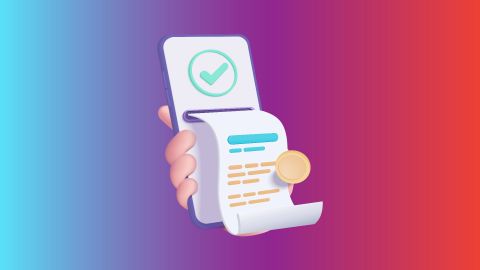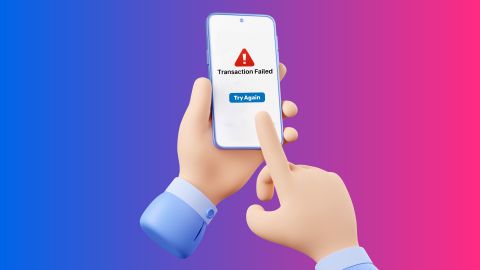Learn how to check electrical wiring in your home with this simple guide. Ensure safety and prevent potential hazards with proper wiring inspections.
How to check electrical wiring at home
-
Faulty electrical wiring is a common issue that can lead to dangerous situations such as power outages, fires, or electrocution. It is crucial to identify and address wiring problems promptly to ensure safety at home or in workplaces. Regular inspections, maintenance, and an understanding of the signs of faulty wiring can prevent costly repairs and hazardous incidents.
Checking your home’s electrical wiring regularly is crucial for safety and efficiency. While you're at it, why not streamline other electrical tasks too? With Bajaj Finserv's BBPS platform, Bajaj Pay, you can easily pay your electricity bills in just a few clicks, ensuring your home's power systems—and your payments—are always up to date.Signs of faulty electrical wiring
Faulty wiring may not always be obvious but can present certain clear warning signs. These include:- Frequent circuit breaker trips: frequent tripping indicates overloaded circuits or short circuits.
- Burning smell: a burning smell near outlets or switches could signal damaged wiring.
- Flickering lights: lights that flicker or dim without reason may point to wiring issues.
- Discoloured outlets or switches: brown or black spots on switches suggest overheating or damage.
- Loose connections: loose or exposed wires can lead to poor conductivity.
- Shock when touching outlets: feeling an electric shock from an outlet is a serious warning sign.
Safety precautions before checking electrical wiring
Before investigating or troubleshooting electrical wiring, take these vital safety measures:- Turn off power: switch off the power supply to the area you’re inspecting.
- Use insulated tools: always use insulated tools to prevent electrocution.
- Wear protective gear: gloves and safety glasses can provide added protection.
- Do not work alone: have someone nearby in case of emergencies.
- Check the area twice: ensure no power is running through circuits before beginning any work.
Step-by-step process to check electrical wiring
- Turn off the power supply: shut down the main power supply to ensure safety.
- Inspect for visible damages: look for signs of fraying, burnt wires, or exposed connections.
- Check connections: ensure all wires are connected tightly to their respective outlets.
- Look for corrosion: corrosion around connectors can lead to poor conductivity.
- Use a multimeter: a multimeter can identify wiring faults by measuring resistance and voltage.
- Test grounding: ensure proper grounding by testing circuits with a multimeter.
- Document faults: record any issues found to schedule repairs or replacements.
How to identify overloaded circuits
- Frequent tripping: overloaded circuits often trip the breaker frequently.
- Multiple appliances: plugging too many devices into a single circuit can cause overloads.
- Hot outlets or switches: overloaded circuits may cause outlets or switches to feel unusually warm.
- Dimming lights: lights dimming as appliances are used could signify too much demand on the circuit.
- Inadequate breakers: a small or weak circuit breaker may fail to manage the load effectively.
- Constantly blown fuses: blown fuses are a sign of excessive electrical load on circuits.
Maintaining your home’s electrical system
- Regular inspections: schedule annual electrical system checks to spot potential issues.
- Update old wiring: replace outdated wiring to meet modern electrical needs.
- Install circuit breakers: these devices enhance safety by preventing overloads.
- Ensure proper grounding: good grounding prevents electrical surges and keeps systems stable.
- Hire licensed electricians: always consult professionals for major repairs or rewiring needs.
Conclusion
Maintaining a properly functioning and safe electrical system is vital for every home and workplace. Faulty wiring and overloaded circuits can lead to severe consequences, including fires and electrocution. Regular checks, proper maintenance, and taking safety precautions are crucial steps in preventing these risks.
-
Recharge and Pay Bills
Mobile Prepaid
Mobile Postpaid
Broadband Bill Payment
Electricity Bill Payment
Bajaj Finserv App for All Your Financial Needs and Goals
Trusted by 50 million+ customers in India, Bajaj Finserv App is a one-stop solution for all your financial needs and goals.
You can use the Bajaj Finserv App to:
You can use the Bajaj Finserv App to:
- Apply for loans online, such as Instant Personal Loan, Home Loan, Business Loan, Gold Loan, and more.
- Explore and apply for co-branded credit cards online.
- Invest in fixed deposits and mutual funds on the app.
- Choose from multiple insurance for your health, motor and even pocket insurance, from various insurance providers.
- Pay and manage your bills and recharges using the BBPS platform. Use Bajaj Pay and Bajaj Wallet for quick and simple money transfers and transactions.
- Apply for Insta EMI Card and get a pre-approved limit on the app. Explore over 1 million products on the app that can be purchased from a partner store on Easy EMIs.
- Shop from over 100+ brand partners that offer a diverse range of products and services.
- Use specialised tools like EMI calculators, SIP Calculators
- Check your credit score, download loan statements and even get quick customer support—all on the app.
Frequently asked questions
What are the signs of faulty electrical wiring?
Common signs include frequent tripping, burning smells, flickering lights, and discoloured outlets.
How can I check if my circuit is overloaded?
Look for frequent tripping, dimming lights, hot outlets, or blown fuses.
Why is grounding important in electrical systems?
Grounding prevents electrical surges and ensures safety during power fluctuations.
Can I repair electrical wiring issues myself?
Only attempt basic checks; for major repairs, hire a licensed electrician.
What should I do if I notice exposed wires?
Turn off power to the area and call a professional electrician immediately.
Show More
Show Less




